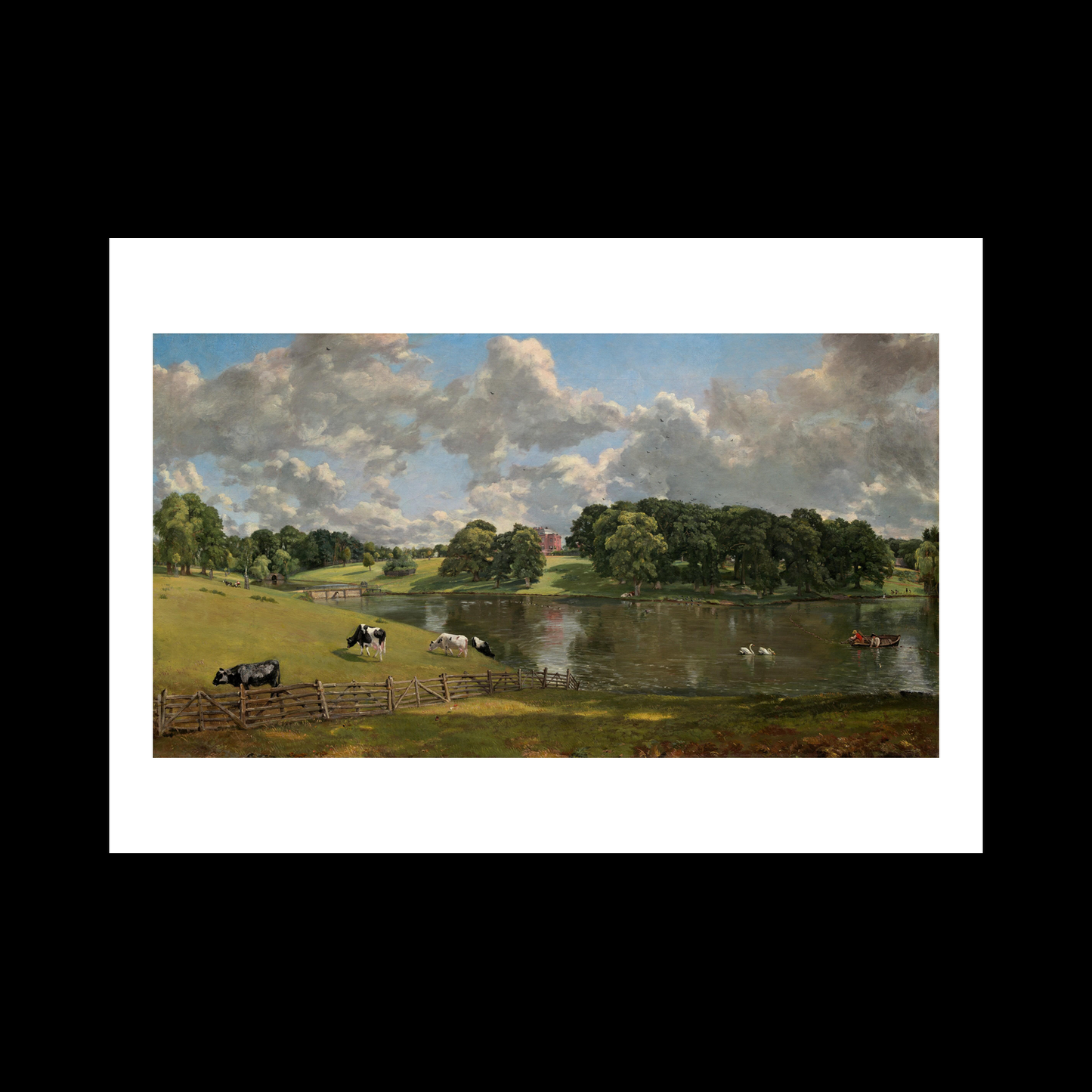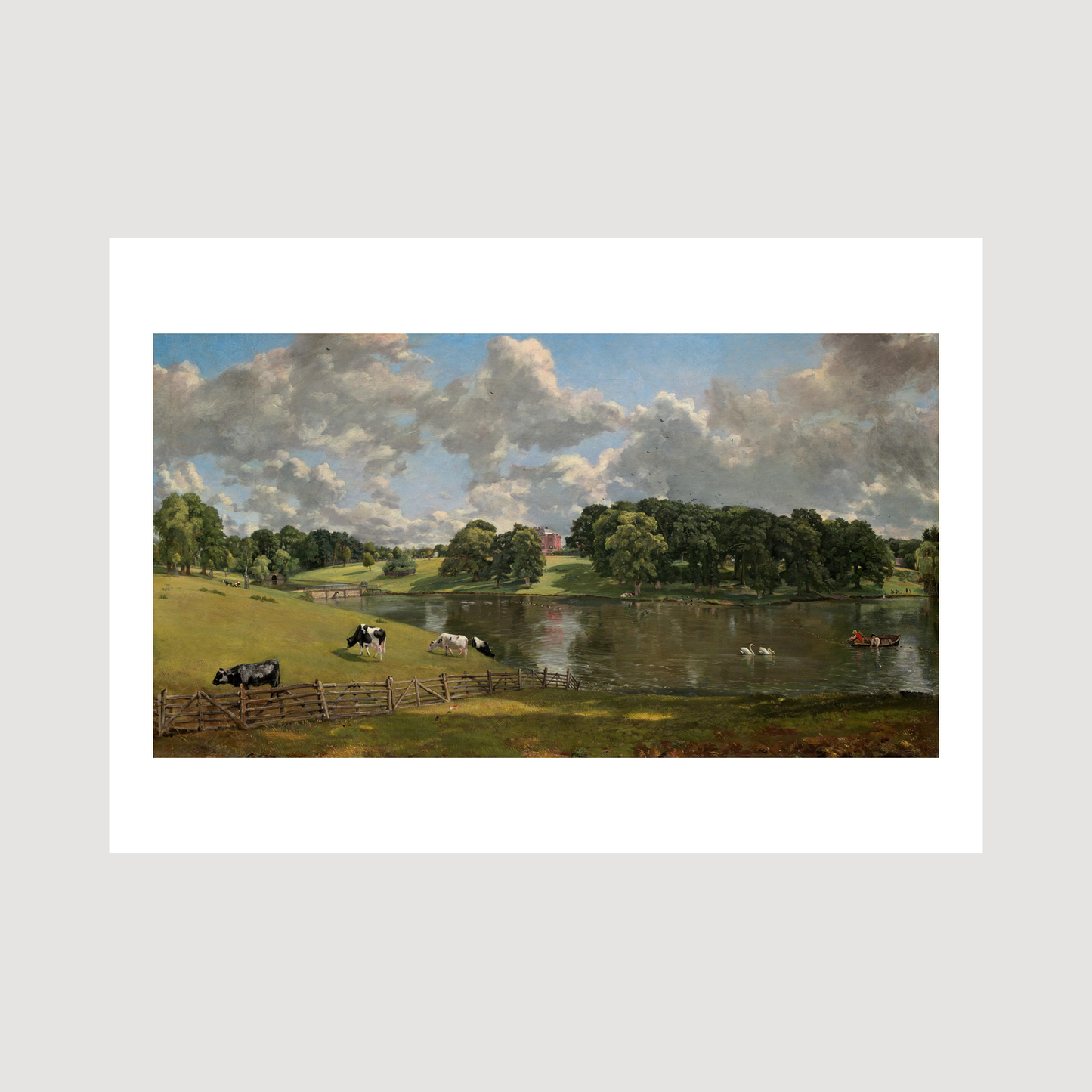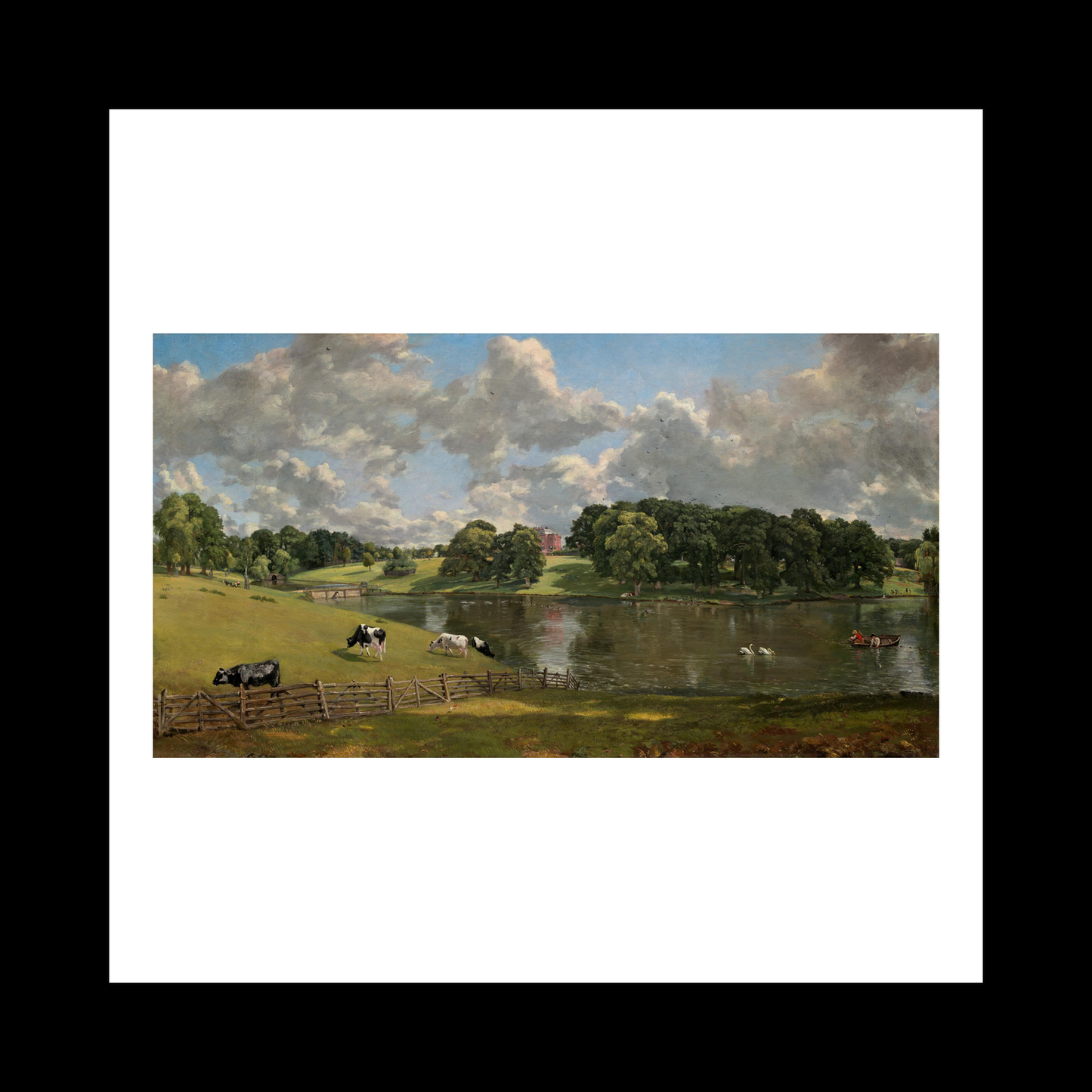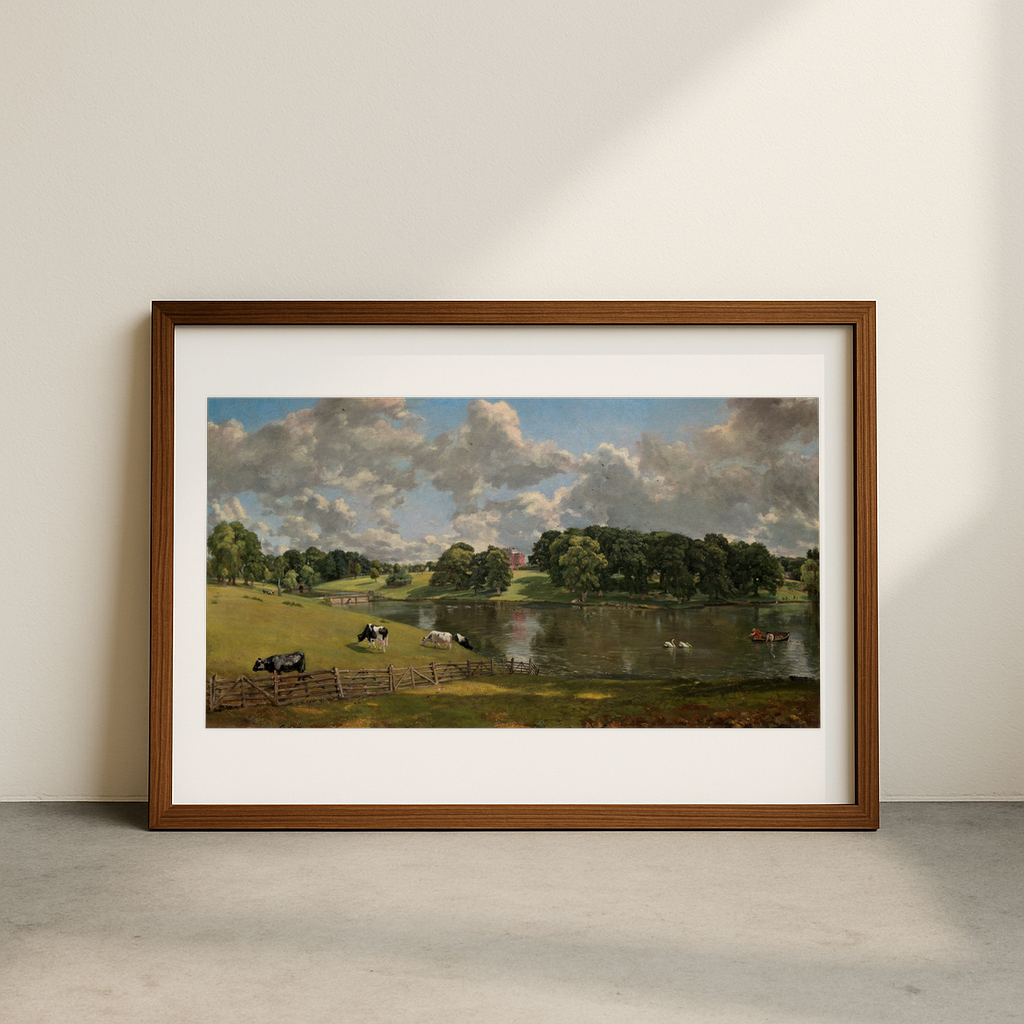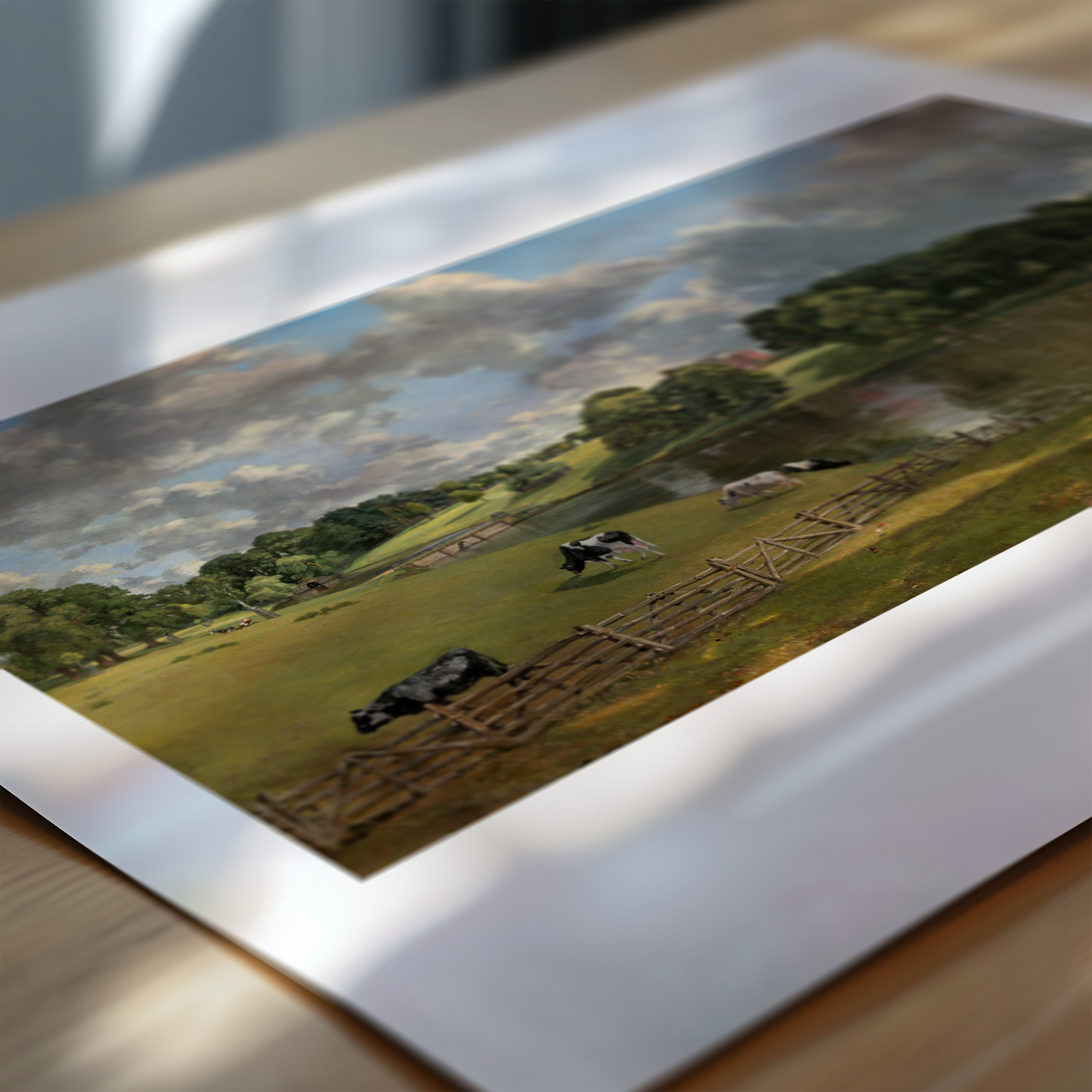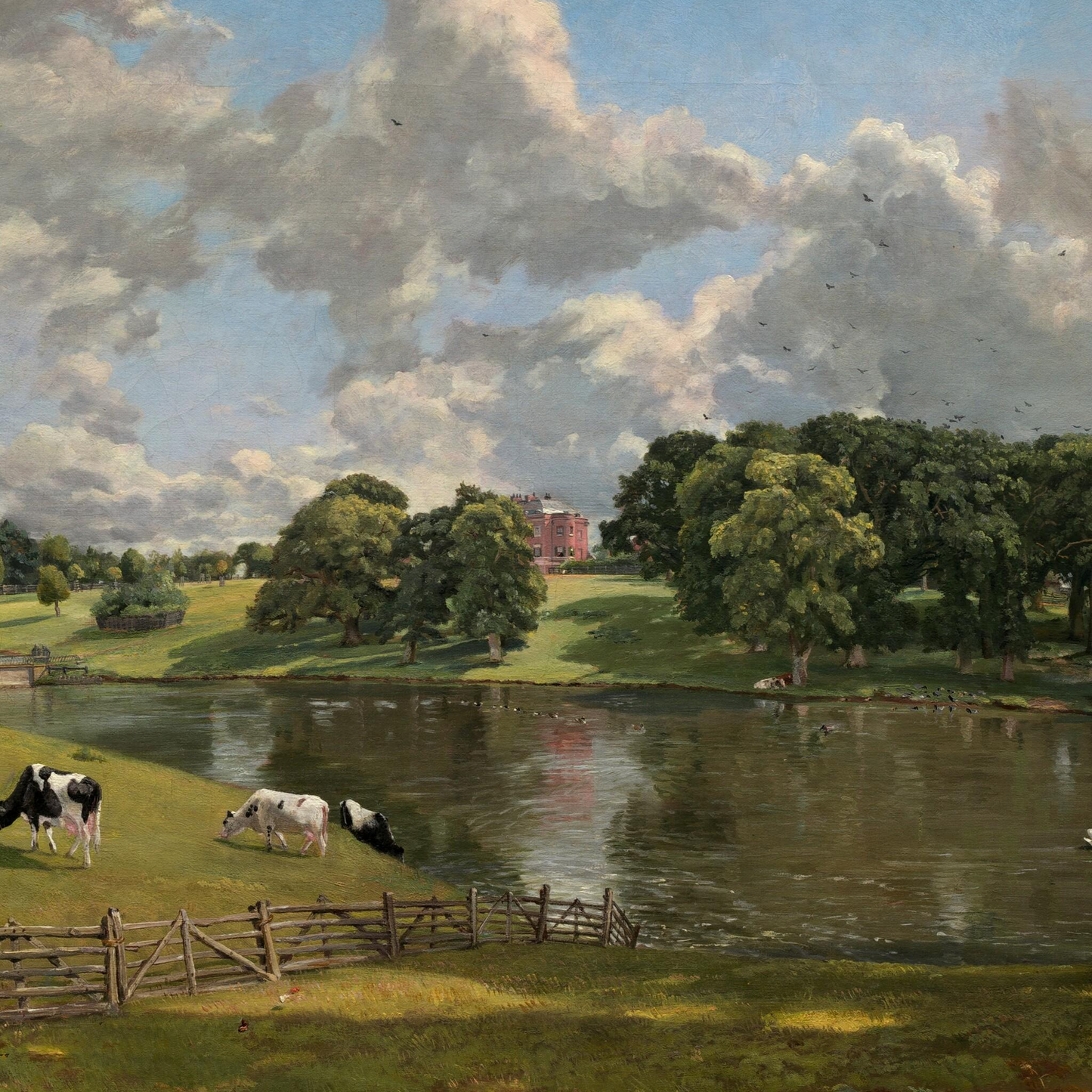1
/
of
6
Wivenhoe Park, Essex (1816) painting
Wivenhoe Park, Essex (1816) painting
Regular price
£12.45 GBP
Regular price
Sale price
£12.45 GBP
Taxes included.
Quantity
Couldn't load pickup availability
Wivenhoe Park, Essex (1816) by John Constable is a remarkable landscape painting that captures the serene beauty of the English countryside during the Romantic period. The work showcases Constable's characteristic attention to atmospheric detail, featuring a sweeping vista of the Essex estate with its tranquil lake, grazing cattle, and majestic trees. The artist's masterful use of light and shadow creates a dynamic interplay across the canvas, while his precise brushwork brings to life the subtle variations in foliage and cloud formations.
This commission came from Major General Francis Rebow, the estate's owner, who wanted to commemorate his family home. Constable spent several weeks on-site making detailed sketches and studying the changing light conditions, a practice that set him apart from his contemporaries. The painting represents more than just a topographical record; it embodies the artist's deep emotional connection to the English countryside and his revolutionary approach to landscape painting, which influenced generations of artists to follow.
The composition reveals Constable's innovative technique of building layers of paint to achieve luminosity and depth. His careful observation of nature is evident in the way he captured the reflection of trees in the water and the distinctive Suffolk sky with its billowing clouds. The inclusion of human figures and animals adds scale and life to the scene, while the careful arrangement of elements guides the viewer's eye through the pastoral landscape. This work exemplifies Constable's belief that painting should be a truthful representation of nature rather than an idealised version, marking a significant shift from the prevailing artistic conventions of his time.
View full details
This commission came from Major General Francis Rebow, the estate's owner, who wanted to commemorate his family home. Constable spent several weeks on-site making detailed sketches and studying the changing light conditions, a practice that set him apart from his contemporaries. The painting represents more than just a topographical record; it embodies the artist's deep emotional connection to the English countryside and his revolutionary approach to landscape painting, which influenced generations of artists to follow.
The composition reveals Constable's innovative technique of building layers of paint to achieve luminosity and depth. His careful observation of nature is evident in the way he captured the reflection of trees in the water and the distinctive Suffolk sky with its billowing clouds. The inclusion of human figures and animals adds scale and life to the scene, while the careful arrangement of elements guides the viewer's eye through the pastoral landscape. This work exemplifies Constable's belief that painting should be a truthful representation of nature rather than an idealised version, marking a significant shift from the prevailing artistic conventions of his time.
